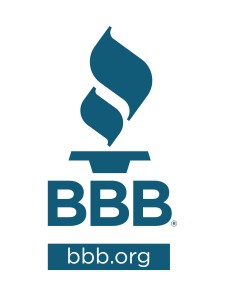![MP900178800[1]](https://dsef.org/wp-content/uploads/2013/08/MP9001788001-300x202.jpg) Most businesses focus on getting new customers, but retaining your current customers is often even more important. Research shows that it costs 6 to 7 times as much to acquire a new customer than to retain an existing one. With this is mind, it makes sense to have a specific strategy in place to keep in touch with former customers, so that they continue to purchase from you. Here are some tips that can help you get more sales from your existing customers.
Most businesses focus on getting new customers, but retaining your current customers is often even more important. Research shows that it costs 6 to 7 times as much to acquire a new customer than to retain an existing one. With this is mind, it makes sense to have a specific strategy in place to keep in touch with former customers, so that they continue to purchase from you. Here are some tips that can help you get more sales from your existing customers.
- Take the time to understand what your customers value. Keep a record of every customer you work with, and note their needs, challenges, and preferences. Then, when you have a new product or solution that meets those needs, you can reach out to that customer and let them know about it. This kind of attention is rarely given to customers anymore, and they will appreciate the fact that you remembered.
- Stay in touch on social media. Invite every customer to connect with you on social networks like Facebook, Instagram and Pinterest. Share fun events you’re holding, and creative uses of your products. Don’t just post your catalog…rather, focus on providing value. For example, you might set up a customer recipe board on Pinterest, and repin recipes that your customers post that you think other customers might enjoy. Your customers will enjoy being featured, and you extend the value of your business to your network.
- Be a social connector within the community. Take some time to talk to each customer and get to know what they are involved with. For example, you might learn that a customer is a member of her local church choir. When you talk to another customer who is new to town and looking for a place to sing, you can introduce the two. This is a great way to help a new person get comfortable in town while naturally expressing the value your business brings to the community.
- Participate and donate. Most communities have local events and causes that are important to the community. Make sure your business has a visible presence in these events and causes. For example, one local community’s food bank was facing a slowdown in donations due to the economic collapse, and in the summer months donations were even lower. Local businesses agreed to host local food collection boxes throughout the summer, and some even offered discounts to residents who brought in a certain amount of cans. Some businesses even posted about donating on their social media presences. As a result, the food bank publicized the businesses in its weekly church bulletin, and posted about the businesses on its social media profiles. The church members made a point of shopping at those businesses, which increased the visibility and repeat purchases of these businesses. It was a win for everyone, and the food bank stayed full for the summer.
- Be seen often. As a small business, your best business marketing tool is yourself! So be present. Show up for as many local events as you can. Shop at other local businesses, dine at local restaurants, spend time at the community pool. The more people see you, the more they will remember your business. You can also use the time to get to know your customers better, so you can better service their needs. This all leads to repeat customers who come to think of you as a friend, and who go out of their way to shop with you.
The key to repeat business is providing a great initial purchasing experience, and then providing the personal attention and reminders that customers need to want to come back. Customers that feel like they have a personal connection to you are a lot more likely to make a point of shopping with you again and again. So build those connections! The result is a business that continues to grow as customers also refer their friends.
How do you keep your customers coming back? Would love to read your thoughts in the comments below.




![MP900316861[1]](https://dsef.org/wp-content/uploads/2013/08/MP9003168611-300x197.jpg)
 Sign up for our quarterly newsletter and receive a free copy of our “What is Direct Selling?” video. Just enter your email address in the upper-right corner of
Sign up for our quarterly newsletter and receive a free copy of our “What is Direct Selling?” video. Just enter your email address in the upper-right corner of 









